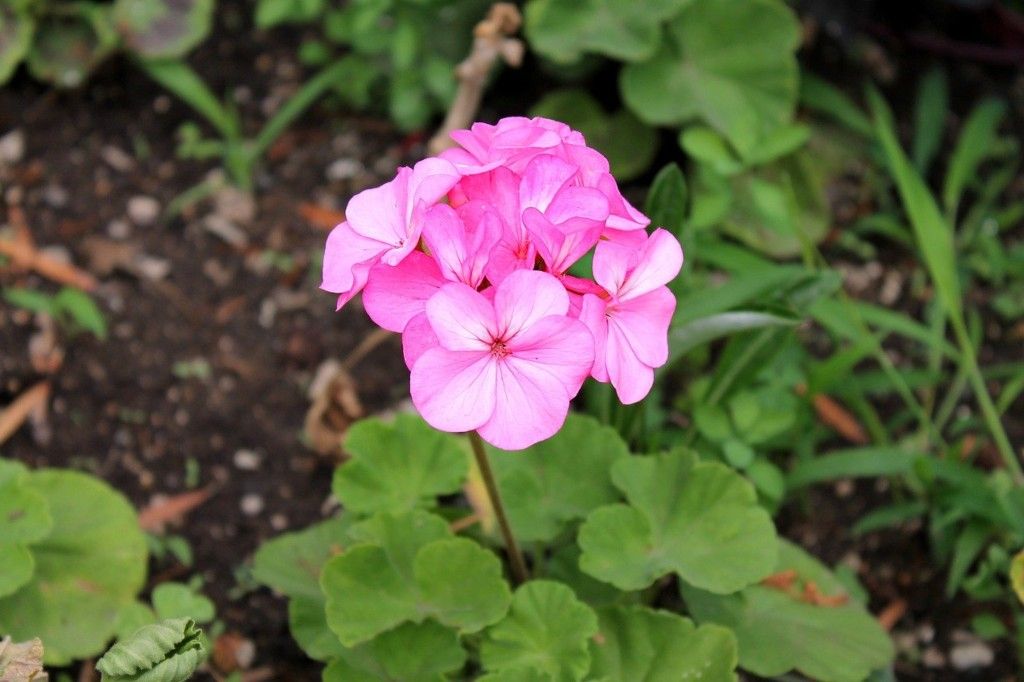Fall is the time to bring indoors all of those houseplants that have been spending the summer outside. As well as my tender hibiscus, amaryllis, and clivia in pots, I usually also dig up a few annual geraniums that I have had in my beds all summer.
Geraniums do well in my garden as they seem to enjoy my clay soil. Actually, the annual plants that we call “geraniums” are really Pelargoniums, and if they get too much nitrogen, they grow big healthy leaves but no flowers.
So, when I pot them up, I put two parts of my garden (clay) soil and one part sand or humus. I also put just a little bit of slow-release fertilizer, such as Osmocote®, as pelargoniums should not be over fertilized. Also, they should only be watered when the soil is dry on top, as too much water makes the leaves turn yellow.
Pelargoniums hail from South Africa and were brought to Europe early in the 17th Century, and their scented leaves and bright flowers were much admired there.
Although we call them geraniums, these annual pelargoniums have larger leaves and clusters of flowers, rather than the single flowers of our true hardy perennial geranium plants that belong to the cranesbill family. Pelargoniums, or tender annual geraniums, hold their flowers upright on stiff strong stems.
To overwinter these annuals, a cool porch or windowsill where they won’t freeze but get good sun is best. You will have flowers all winter if they like their spot.
This is Moya Andrews, and today we focused on tender geraniums.










